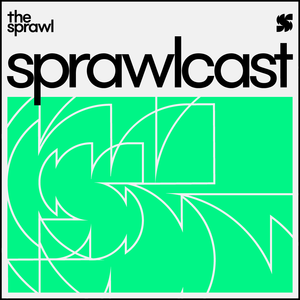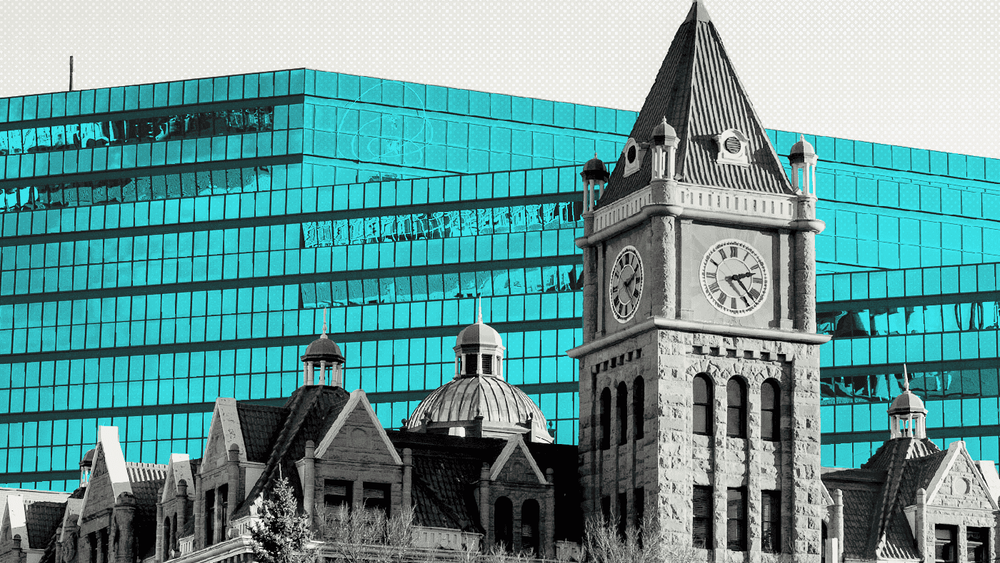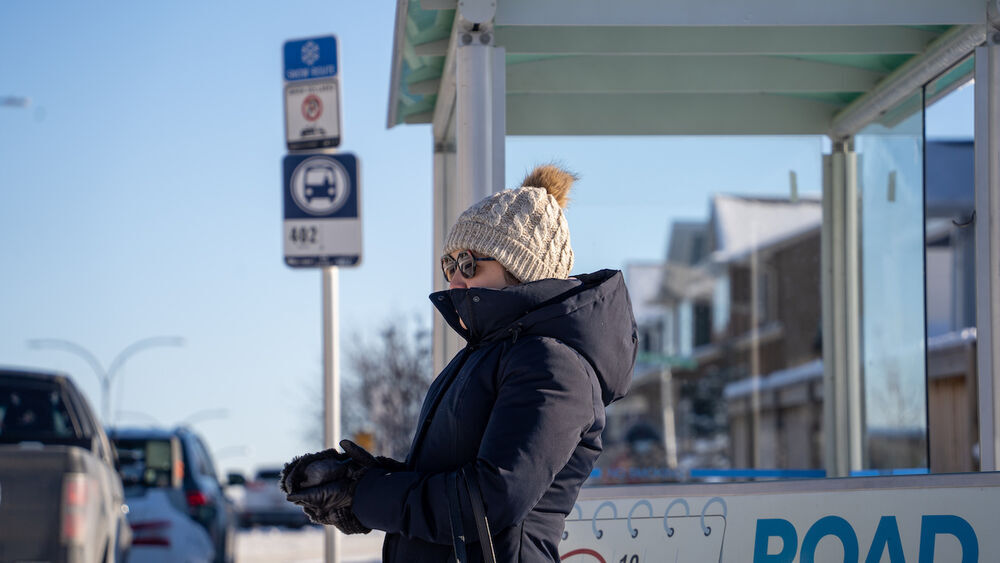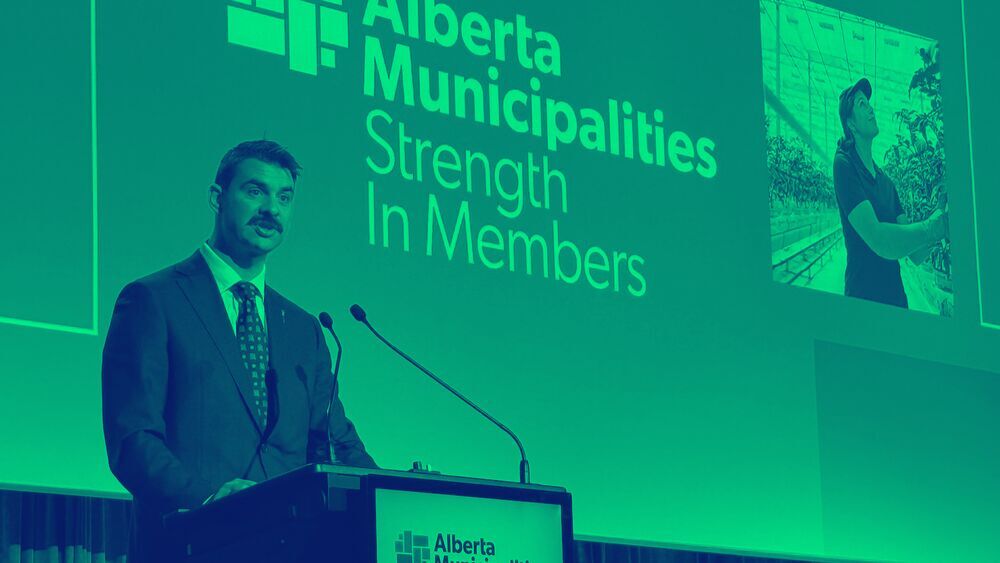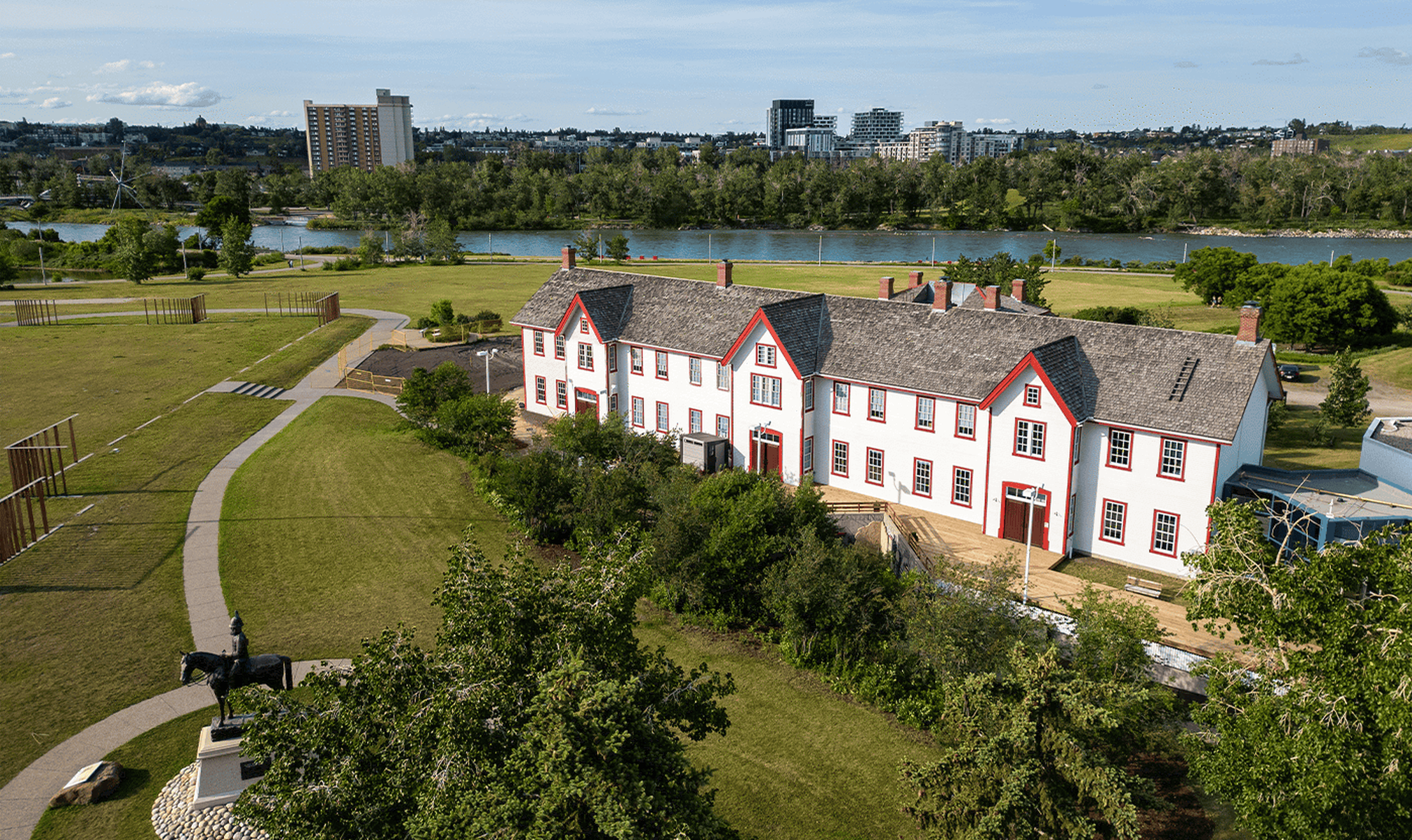
Fort Calgary was established in 1875. Photo: Gavin John
Calgary at 150: The forgotten anniversary
Is this awareness — or amnesia?
Sprawlcast is Calgary’s in-depth municipal podcast. Made in collaboration with CJSW 90.9 FM, it’s a show for curious Calgarians who want a deeper understanding of the city they call home.
If you value in-depth Calgary journalism, support The Sprawl so we can do more stories like this one!
SHAUN HUNTER: It's a complicated moment to observe. But what—are you afraid of complication?
COUNCILLOR GIAN-CARLO CARRA: We are calling bullshit on the previous narrative that this was a place where nothing was happening until a bunch of North West Mounted Police showed up and founded civilization.
PAULA SMITH: That's what 150 years reminds me of. The overtaking of this land. The massacre of this land. The desecration of this land.
MAYOR JYOTI GONDEK: I think people are really happy to have more customized options to celebrate being a Calgarian and being a Canadian.
JEREMY KLASZUS (HOST): On a warm day in early June, beer cans were rolling off the production line at Tool Shed Brewing in northeast Calgary.
It was a new pilsner to commemorate the 30th anniversary of the HMCS Calgary, a Canadian Forces ship named after our city. The HMCS Calgary has been deployed everywhere from the Persian Gulf to Vietnam. And Councillor Gian-Carlo Carra and Tool Shed owner Graham Sherman were all smiles at the beer launch.
COUNCILLOR CARRA: HMCS Calgary is our city's namesake naval frigate. It's based in Esquimalt outside of Victoria, and it has been sailing for 30 years, projecting Canadian values into the world.
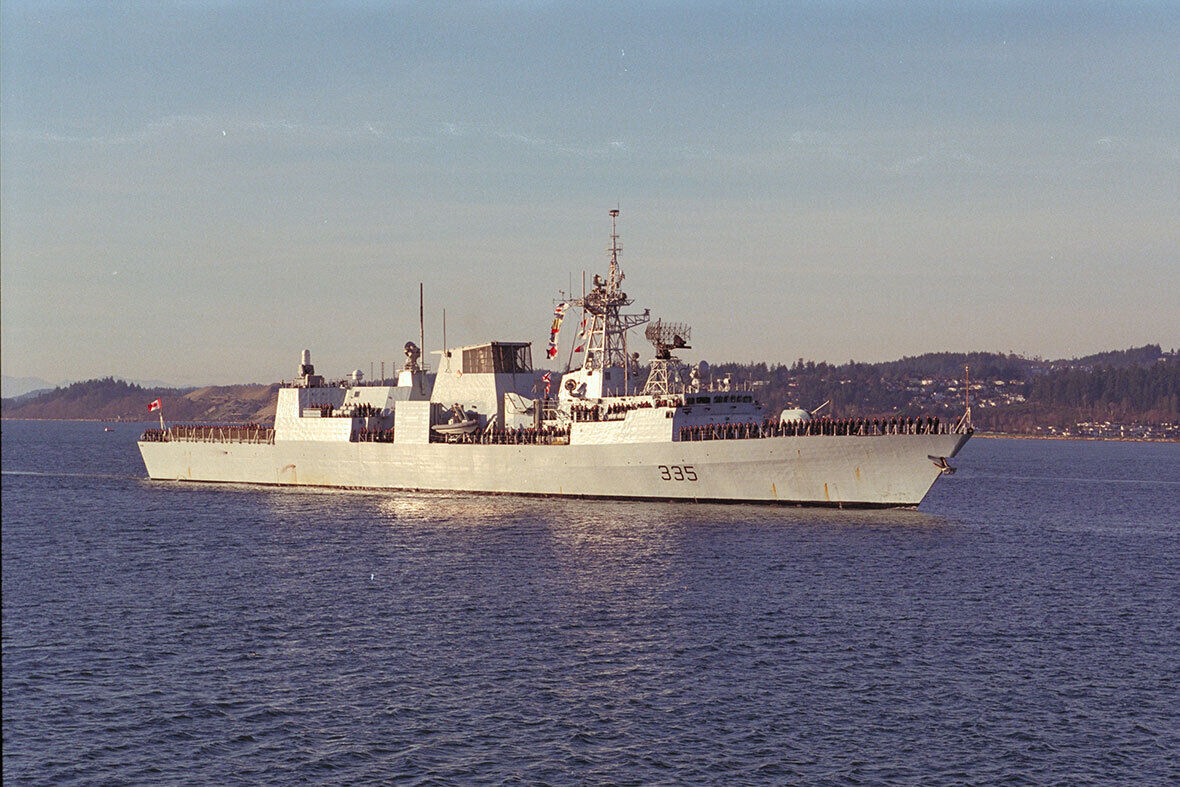
GRAHAM SHERMAN: When you look into the history of what HMCS Calgary has actually been a part of, it is a tremendous honour that the name Calgary is up on that ship. So I think this is an awesome opportunity to share that story with the rest of not even just Calgary, the rest of Canada.
KLASZUS: You could feel the enthusiasm in the room over this anniversary. A group of five city councillors, including Carra, recently traveled to Victoria to celebrate the naval milestone.
But what about the anniversary of the landlocked city the ship is named after? That’s a more muted affair.
The year 2025 marks 150 years since the North West Mounted Police established Fort Calgary in 1875. And while Calgary wasn’t incorporated as a town until 1884, Fort Calgary’s anniversary has traditionally been celebrated as the city’s “birthday” and commemorated with all kinds of civic fanfare.
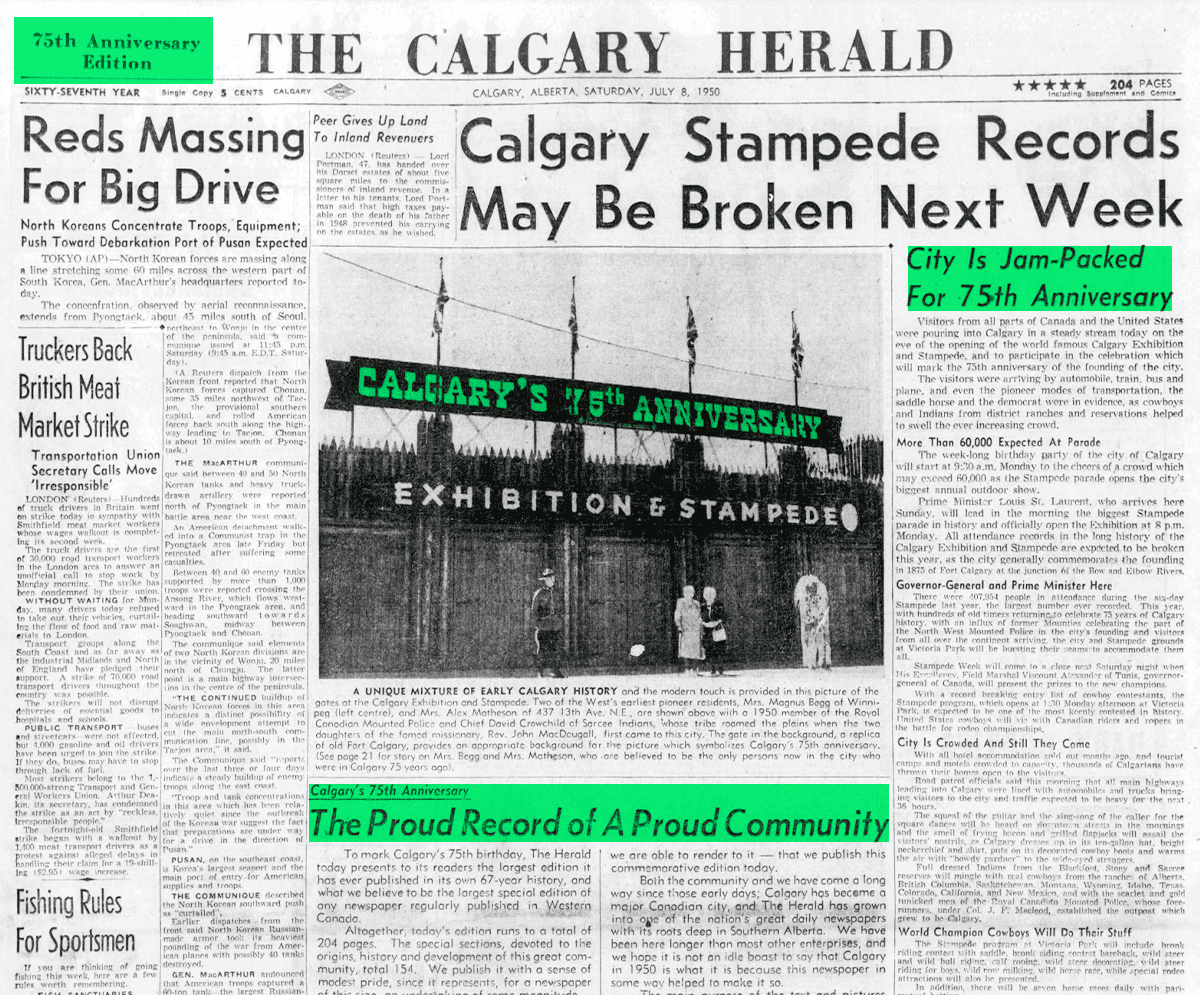
KLASZUS: Today, in 2025, there is no big citywide celebration for the fort’s sesquicentennial. City hall doesn’t plan to celebrate Calgary’s 150th until 2044, the anniversary of Calgary’s incorporation as a city.
Where city hall previously championed Fort Calgary’s anniversary, helping make it a big citywide celebration, this time city hall has passed the 150th to The Confluence, the civic partner formerly known as Fort Calgary. With $150,000 from the city, The Confluence is doing smaller-scale conversations to commemorate the arrival of the North West Mounted Police here at the place the Blackfoot call Mohkinstsis.
PAULA SMITH: They say that they were bringing peace. But what they mean is they were bringing peace for the settlers.
KLASZUS: This is Paula Smith. She’s from the Piikani Nation, one of the three Nations that comprise the Blackfoot Confederacy, and is The Confluence's Indigenous relations manager.
PAULA SMITH: In other words, they were settling down the savage Indians so that they can come and take all the land.
KLASZUS: We’re going to hear more from Smith in this story. We’re going to also hear from Mayor Jyoti Gondek on why city hall isn’t championing the anniversary this time around. And we’re going to hear from a couple historians who see “Calgary’s forgotten sesquicentennial” as a missed opportunity to dig deeper into the story of this place.
DON SMITH: It's lighting the imagination. It's looking back on the past. It's seeing the good and the bad.
KLASZUS: What does the 150th anniversary of Fort Calgary mean today? And does city hall’s decision not to make a big deal of it show awareness—or amnesia? Let’s get into it.
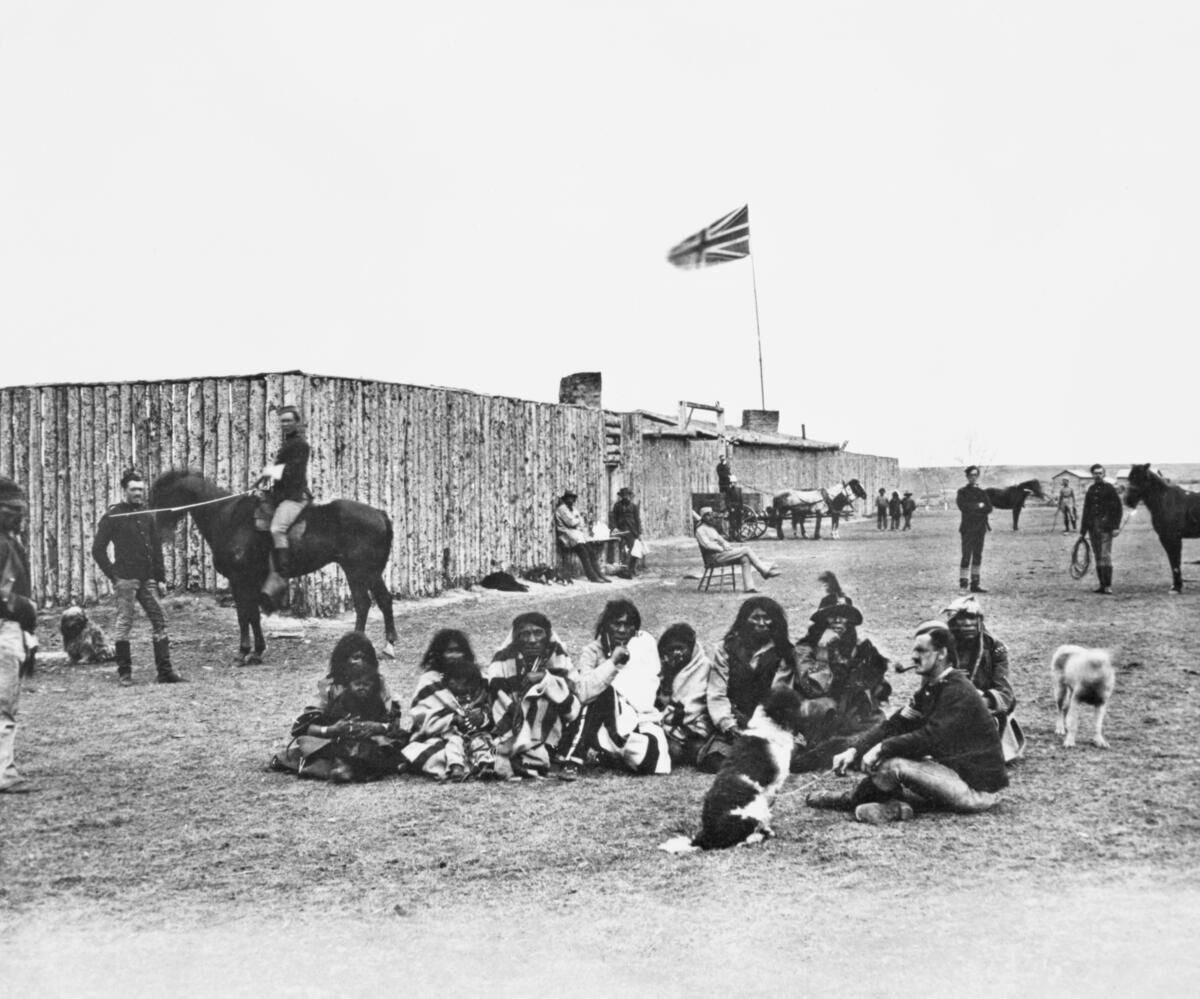
'It was very celebratory': A city with pride in its past
KLASZUS: If you were in Calgary fifty years ago, in 1975, there was no missing the centennial. Everybody knew about it. There were poster contests, centennial songs, civic beautification projects, even a “Disney-style” centennial mascot. His name was Centenny Al. I am not making this up.
DON SMITH: It was a very gung-ho thing.
KLASZUS: This is Don Smith, who taught Canadian history at the University of Calgary for 35 years and has written numerous history books. He moved from Ontario to Calgary in 1974. And he arrived in a city of 400,000 that was excitedly exploring its past—or, at least, a rosy rendition of that past.
DON SMITH: It was a celebration, literally. And now, of course—history changes, you see. There's different contexts, a different viewpoint. In the mid-’70s, it was very celebratory. And so there were about 30 little books that were done. There were local events. A lot of enthusiasm.

DON SMITH: It was really, really fantastic. The celebration [was] not critical, though, I'm first to admit. Now, of course, the Indigenous side is so better known. And they were left out in ’75. They were. They were acknowledged, of course. But our image of the Mounties also has changed. History evolves. It's a reflection of the present on the past. And there are many viewpoints, but to me, it was healthy. It was exuberance of youth at 100. Now we're 150 and I'm sort of disappointed there's not much fuss.
KLASZUS: The Calgary centennial was planned years in advance. And one of the things that strikes me, looking at it today, is how deliberate the organizers were in getting Calgarians involved. One of their slogans sums it up well: CENTENNIAL IS EVERYBODY’S BUSINESS!
Businesses, service clubs, non-profits, even families were asked to take the centennial theme and run with it.
Indeed, Fort Calgary as we know it today is one of the projects that came out of centennial efforts. The original fort site had long been a railyard but Alderman John Ayer pushed for a historical park and interpretive centre, a place where people could learn about Calgary’s history. The idea was planted during Canada’s 1967 centennial celebrations, and the Calgary centennial eight years later gave the project momentum.
History evolves. It’s a reflection of the present on the past. And there are many viewpoints.
KLASZUS: This kind of birthday boosterism was not new. Calgary had done it before for its jubilee—its 50th anniversary in 1925.
SHAUN HUNTER: In January 1925 a bunch of city leaders got together. Civic leaders, businesspeople, people involved with the Calgary Stampede...
KLASZUS: This is local writer and literary historian Shaun Hunter, who’s been researching the 1925 jubilee.
HUNTER: ...And they said, let's have a birthday party for Calgary. It’s 50 years since the fort was established at the confluence. Now in 1925 that fort was no longer there. It had become a terminal for the Grand Trunk Railway. And everything, all the palisades, all that stuff, was razed.

KLASZUS: Calgary had a population of 60,000 at the time.
HUNTER: So 1925. City finding its feet. Very much interested in developing business opportunities and telling Canadians about that. Very interested in having more people come to town. So this is a city of big dreams.
The other thing that was not too far in the rear view mirror was the big real estate boom, the pre-World War I boom, when all sorts of city building was happening. We had our Memorial Park Library, a central library—beautiful building. We had a lot of these kinds of things. And these big dreams were dashed in the fall of 1913 when the whole world economy fell apart. And I think a lot of people who stayed here through to the ’20s were still remembering that sense of: We can do this. We can put Calgary on the map. We can be a metropolis.
The Mounties, in those years, were seen as kind of heroic figures—that they had brought peace to the West. That would change over the decades, but in 1925 they were revered that way. There was also a sense that pioneers who had come in those early years in Calgary, they were also dying and leaving, and that their stories were valued, that their contributions were valued.
So there was a sense of the past fading, and there was also the sense of: we need to build a future. So what better way to do this than throw a birthday party?
KLASZUS: And so in 1925, they reenacted Calgary’s history with a big pageant, or parade, during Stampede week in July. There were 30 floats with different “episodes” in the city’s history.
HUNTER: This historic pageant was going to be bigger, better, more authentic, more more more than anything that had ever happened before.
KLASZUS: At the time, Calgary’s history was clear cut—at least for those writing it.
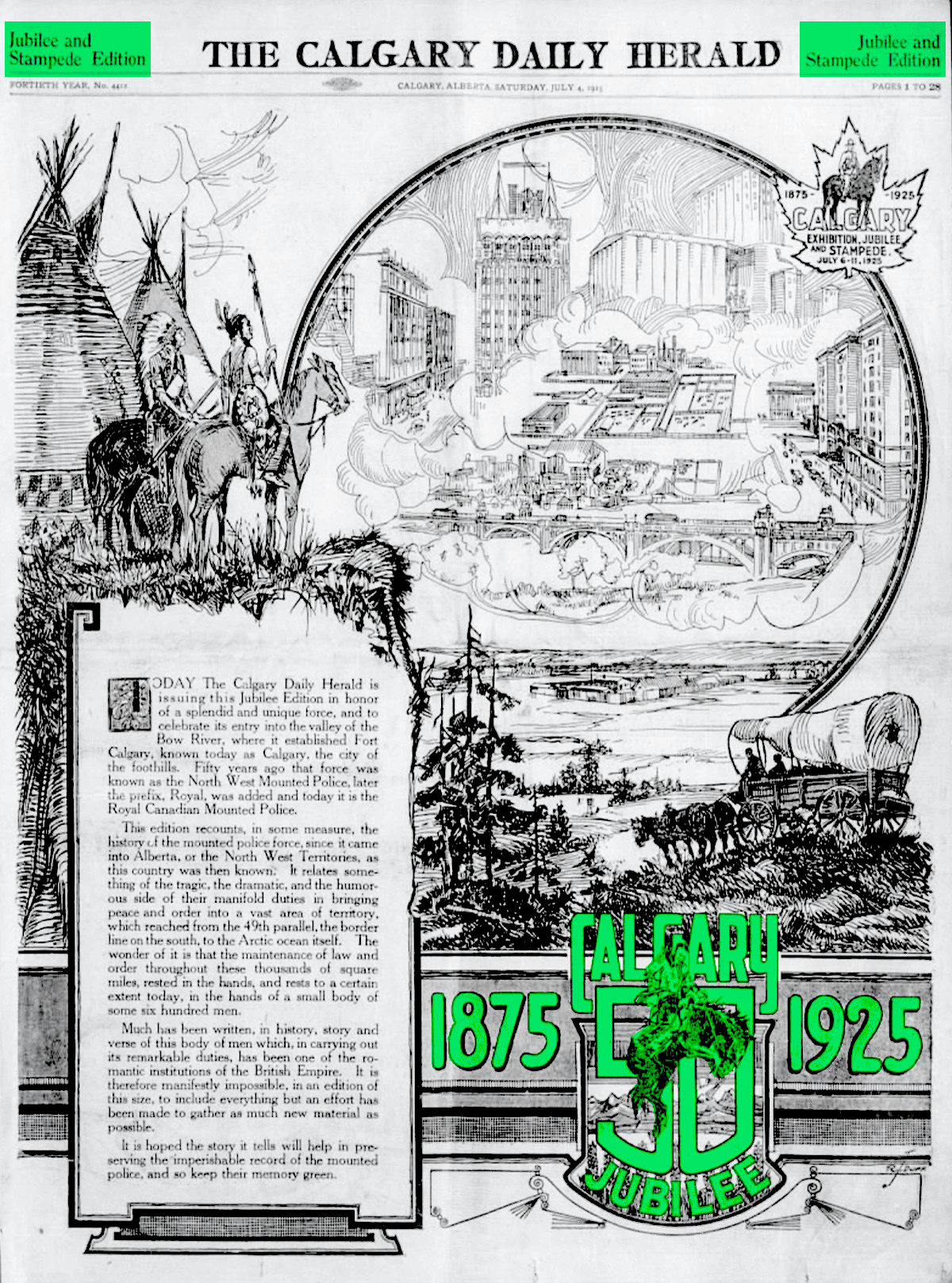
HUNTER: The other really interesting thing about this pageant was the Herald produced a souvenir edition, which was essentially the narrative. So we get a really clear sense of what their version of history was. And from my research, it's very clear that there was not a lot of division about what that history was. It was a consensus.
For instance, the First Nations were picturesque people. They were a dying civilization. Consensus on that. The Mounties? Heroic figures. Peace in the West. Settlers, pioneers, entrepreneurs? Mainstay, foundational in setting up the city. The British Empire? Highly valued.
KLASZUS: Calgary’s growth was celebrated as progress, just as the city’s oil industry would be celebrated as a pillar of progress in 1975. But what did that progress entail?
The Mounties, in those years, were seen as kind of heroic figures — that they had brought peace to the West.
'Settle the Indians': The 1875 fort and its legacy
We’ll come back to the notion of progress and how that’s changed. But first, let’s keep working our way back. We’ve covered 1975 and 1925. Now let’s go back to the establishment of Fort Calgary in 1875. That’s when the Canadian government sent the North West Mounted Police here to abolish the whiskey trade.
But that wasn’t the only function the police force had. One centennial history book from 1975, a history of the police force, sums it up succinctly: “The scarlet-coated force preceded and cleared the way for the white settlers who followed.”
PAULA SMITH: The fort reminds me of how they came and had disregarded all living things that were here, including First Nations peoples.
KLASZUS: This is Paula Smith, Indigenous relations manager at The Confluence. I asked what the fort’s 150th anniversary means to her.
PAULA SMITH: It holds a negative, a hard place in my heart, because it was the beginning of them settling. And what they mean by settling is they need to settle the Indians.
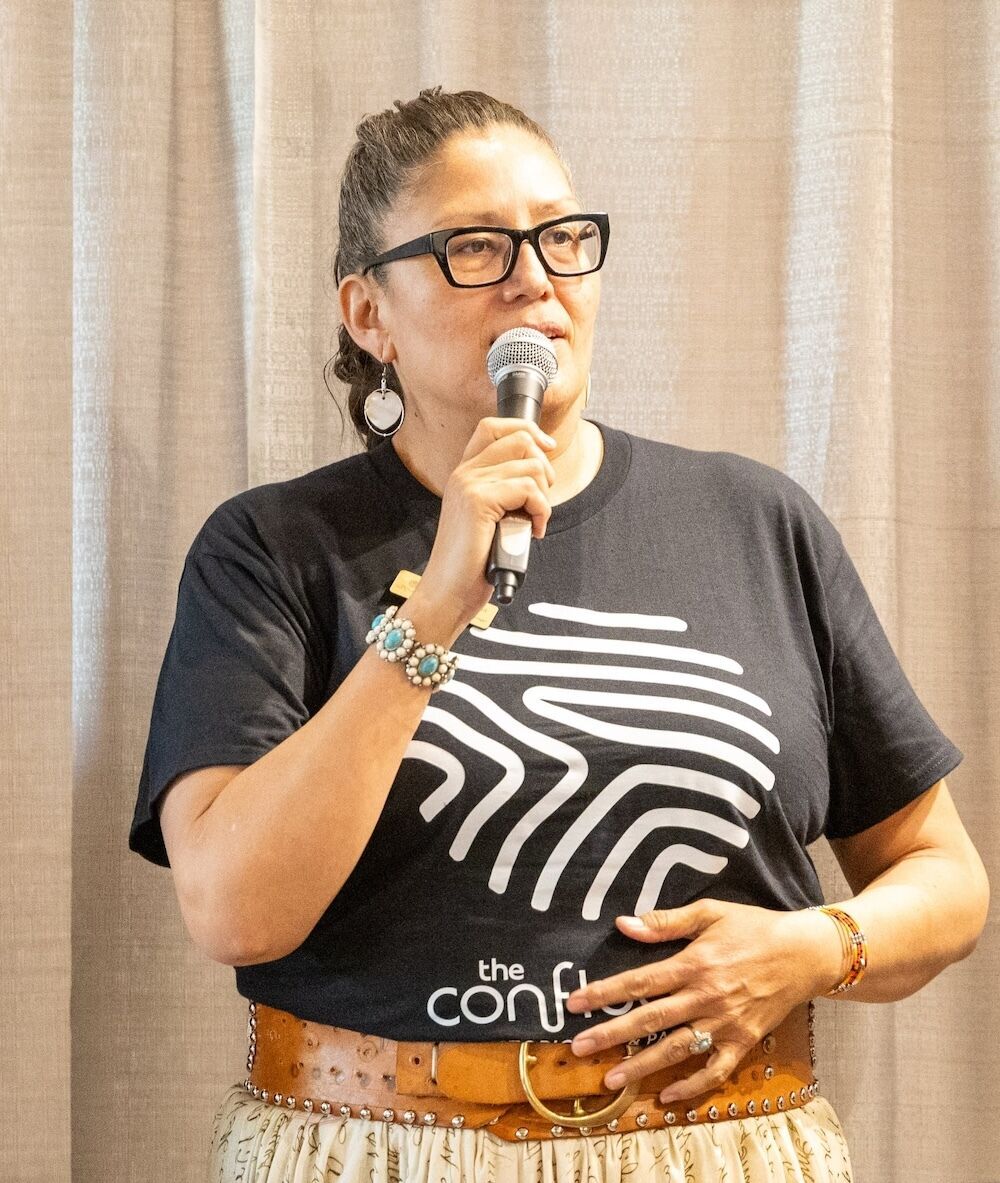
They say that they were bringing peace. But what they mean is they were bringing peace for the settlers.
PAULA SMITH: So 150 years ago, to me, reminds me of the time when the massacres were ending and the reservations were beginning. And at that time, the fort was established so that they could settle the Indians out here, and so that they could bring in the forts, and so that they can establish their cities and towns, and so that they can overtake this land for their religions and for all of their European things that they do.
That's what 150 years reminds me of. The overtaking of this land. The massacre of this land. The desecration of this land.
JEN THOMPSON: It really signifies the point in which colonialism started here in this area.
KLASZUS: This is Jen Thompson, president of The Confluence.
THOMPSON: And when I think about it from where I'm sitting today, it really started the ball rolling on erasing anything that had happened before that point, and shifting the emphasis on the glorification of founding this country in ways that may not have always been with the best interest of the people who had always been here. And so it’s really interesting for me to think about stewarding this land and trying to lean into how do we tell a story?
It really signifies the point in which colonialism started here in this area.
THOMPSON: I think there's been just so much emphasis put on the North West Mounted Police and not enough emphasis on all of the other components that came before that moment.
PAULA SMITH: So now we live under the auspices of colonization, assimilation, basically domination. And my people are still currently surviving genocide.
So this place is not just about two rivers meeting. All tribes came and utilized this area. This is where we would come for migration. This is where we would come to hunt, because all of the big game, and today they call them keystone species, would come and feed here.
All living things would come and feed here, including human beings. So we didn't separate ourselves from any other living being. We only included ourselves as another living being.

KLASZUS: Unlike some older forts like Fort Edmonton, Fort Calgary wasn’t an outpost of much trading significance. But in 1877, the North West Mounted Police arranged for the signing of Treaty 7 between the Canadian government and local First Nations—the Siksika, Kainai, Piikani, Tsuut'ina and Stoney Nakoda. The First Nations saw it as a peace treaty; the Canadian government used it as license for colonization and confined First Nations to reserves.
This paved the way for the Canadian Pacific Railway, which arrived in Calgary in 1883.
The railway jumpstarted the city we know today. The railway sold land to “colonization companies,” as they were called. And these colonization companies would then sell the land to European settlers who were pouring in on the train.
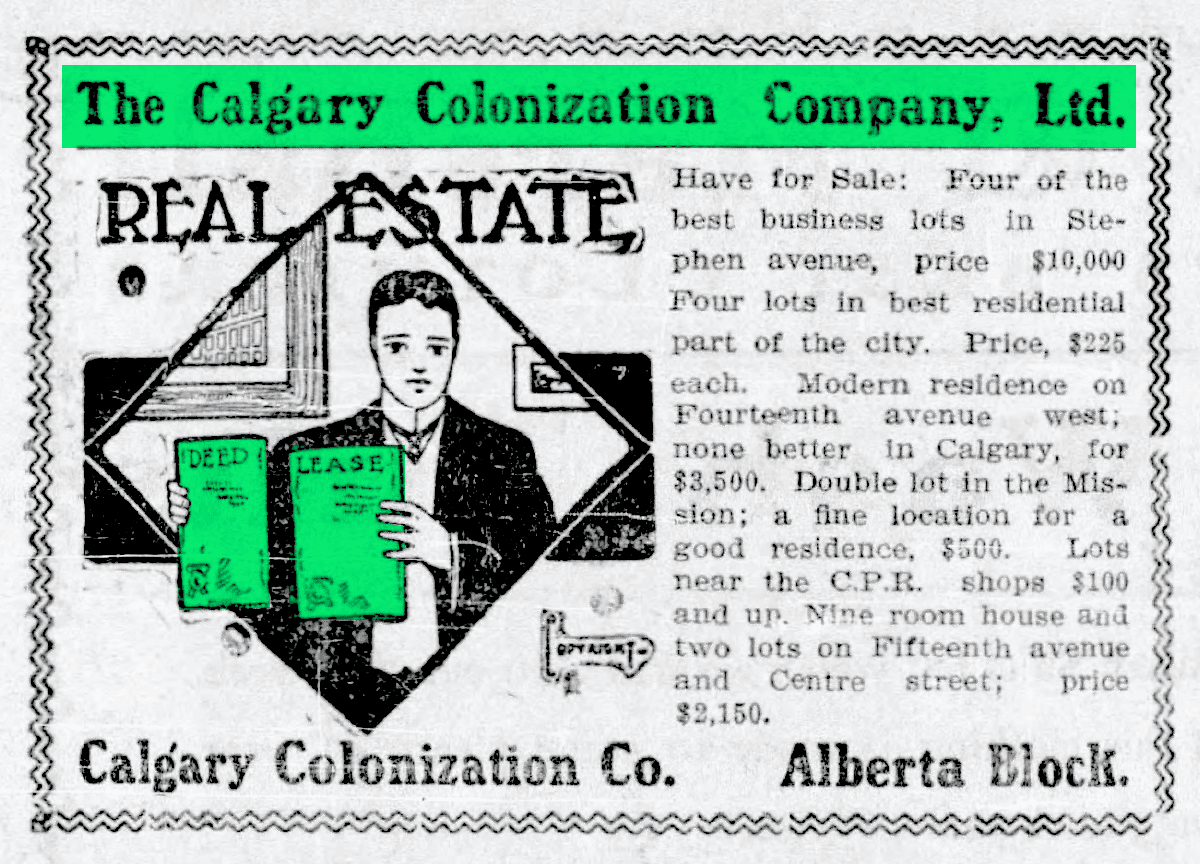
KLASZUS: Meanwhile, Indigenous children were being taken from their families to residential schools. This too was viewed as progress in Canadian society until relatively recently.
PAULA SMITH: This is when they were implementing the three C's. We have to Christianize them, colonize them, and civilize these lousy Indians, is what they called us. Savage Indians. And they're not even human because they're not Christian. So that mentality and attitude from all white people or settlers that had come, especially the North West Mounted Police—they were busy rounding us up onto the reserves. They were busy ensuring we didn't leave the reserves, and if we did, they were busy ticketing us, fining us or jailing us.
KLASZUS: For Calgary’s 150th anniversary, The Confluence is focusing on the legacy of colonialism. Confluence president Jen Thompson has said it isn’t a moment for celebration.
The Confluence rebranded from Fort Calgary in 2024, and has been focusing more on Indigenous cultures and stories. It’s overhauling all its exhibits, starting with a new Blackfoot exhibit that opened in May, focused on living Blackfoot traditions. It’s called Kípaitápiiyssinnooni, which means “our way of life” in Blackfoot.

This place is not just about two rivers meeting. All tribes came and utilized this area.
PAULA SMITH: What this place means to me is that it gives us an opportunity to reconnect back to being a matapi, which means being a human being.
KLASZUS: For the 150th, The Confluence has been holding a monthly conversation series and will also host a symposium with the U of C in October, focused on “the impacts of post-confederation colonialism and modern expressions of colonial power.”
THOMPSON: I am not going to argue with anybody, whether or not they believe the foundation of Calgary started with the establishment of the fort. But what I would say—and this is a journey that we have certainly been going on—that isn't the whole story. The banks of the Bow and Elbow rivers right here are the story of where creation story started for the Blackfoot people. So why isn't that the beginning of our city?
There's been many people, many communities that have come through these lands, and I think today, we really try to look at things more critically to understand identity. Identity is a really hard conversation right now, but I think for us, it's really important to have that conversation.

'Going to be in 2044': City hall waits to celebrate
KLASZUS: So if you’re Calgary city hall, what do you do with this story, 150 years on? On one level, you could argue the history is more integrated. Every city council meeting, for example, begins with a land acknowledgement.
MAYOR JYOTI GONDEK: Long before Scottish settlers named it Calgary, the Indigenous Nations of this land had their own names for this place. The Blackfoot called it Mohkinstsis, the Îethka Nakoda Wîcastabi referred to it as Wicispa Oyade, and the people of Tsuut’ina call it Guts’ists’i. The Métis call this area Otos-kwunee.
KLASZUS: There is little appetite at city hall to commemorate the city's anniversary like it has in the past. Instead, it’s giving $150,000 to The Confluence to mark the occasion. I asked Mayor Jyoti Gondek about this.
MAYOR GONDEK: So I can't speak to what happened during the centennial because I wasn't around. I certainly wasn't in a decision making position. But I think what's really important to recognize is that we have civic partners now that I don't think we had back then, and so the city basically did everything on their own. So I think we are really well positioned now and really well supported with an organization like The Confluence being able to tour people through the history of that space.
The way that they can activate their space and the way that they can tell the story of Calgary and 1875 is probably a lot better than what we could do down here at the municipal building.

I think what’s really important to recognize is that we have civic partners now that I don’t think we had back then.
KLASZUS: City hall itself plans to hold off on celebrating the city’s 150th for a couple decades yet. Here’s what Councillor Gian-Carlo Carra told me about that.
COUNCILLOR CARRA: I do believe that Mayor Gondek's predecessor, Mayor Nenshi, made the cost-conscious decision to consider 1894—and the establishment of Calgary as an actual city—as the actual 150th. This council has had four years to reconsider that, and we, quite frankly, have not. And whether that's a miss or a mistake, I don't know.
KLASZUS: Here’s Kay Choi, the city director who oversees city hall’s arts and culture department.
KAY CHOI: That's going to be in 2044. I think I can probably relate it to this: Do we celebrate the anniversary of our first date? Do we celebrate the anniversary of when we got engaged? Or do we celebrate the anniversary of when we got married? And so we have so many of these dates, and I think we should be proclaiming a date—and that is something that we want to have council review and make a decision.
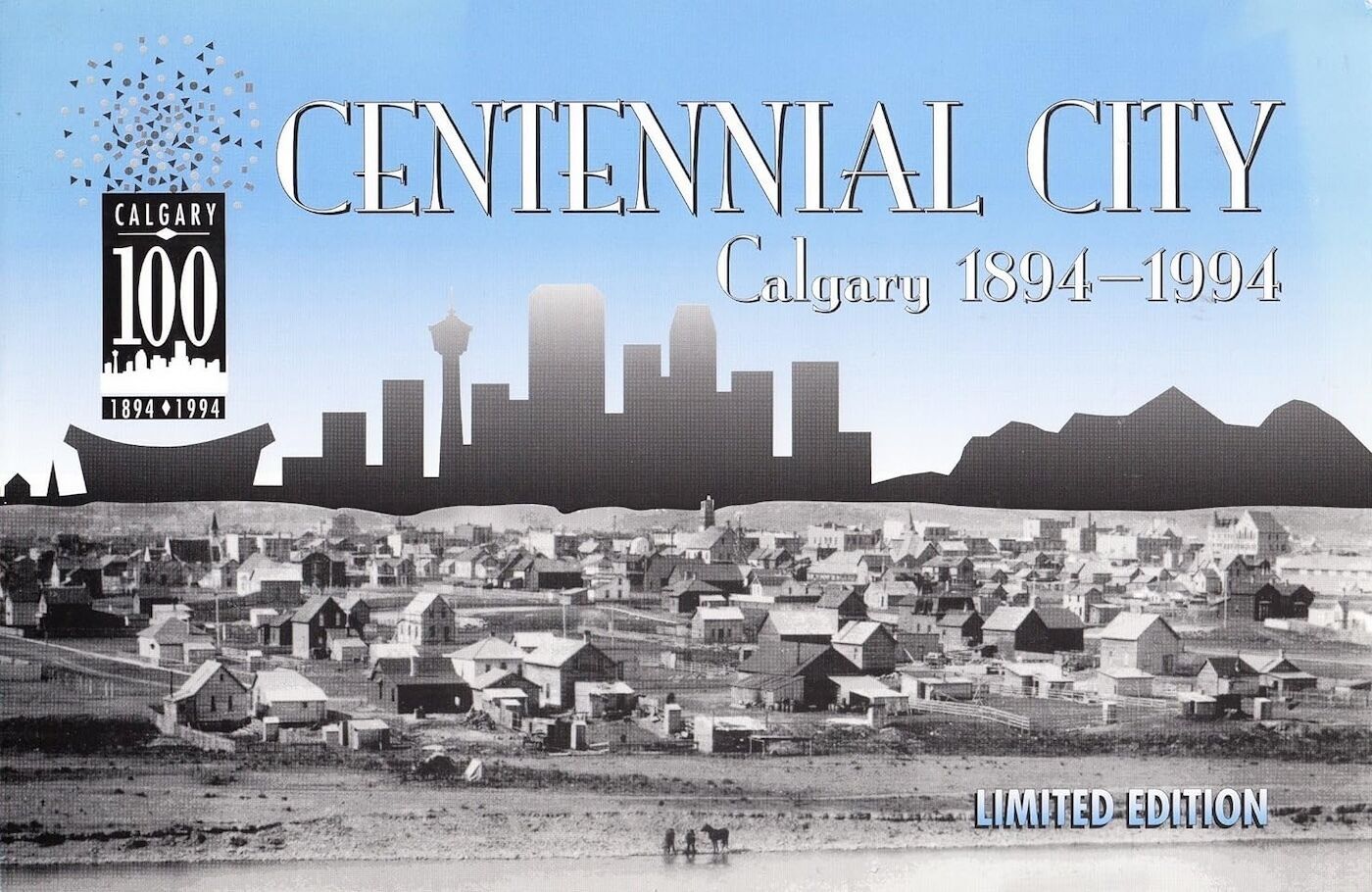
KLASZUS: There’s some logic to this. Calgary celebrated its centennial three different times: the big celebration in 1975, in 1984 on the anniversary of the town’s incorporation and again in 1994 for the city’s incorporation. At a certain point, Calgarians got centennial fatigue.
On the other hand, you had western history enthusiasts like author and former mayor Grant MacEwan who argued that “any community with pride in its past and desire to express its maturing personality should seize upon and use every important anniversary.”
This was the spirit of the times, coming on the heels of Canada’s 1967 centennial. You can look around Calgary and see the lasting impacts of that celebration too—like Confederation Park. But a lot has changed since those 20th century celebrations. Here’s local historian Shaun Hunter reflecting on what’s changed since 1925.
HUNTER: There was a sense of consensus about the history of this place and the identity of this place. We don't have that now, I don't think. We have a city that's diverse, that's complicated. And there is divisiveness in this city. There is not consensus on that.
Any community with pride in its past and desire to express its maturing personality should seize upon and use every important anniversary.
HUNTER: Back in 1925, there was a sense that progress was to be celebrated. This was a value we held dear. I don't think that's the case now. There's a lot of questioning about the progress model we see.
First Nations—considered a fading civilization 150 years ago. Now we're in a process of truth and reconciliation. It's very different. The Mounties were heroes back then. Not so much now. They're very associated with the colonial past, and we're questioning that.
MAYOR GONDEK: I think the way we celebrate locally has changed as well. I mean, we've got Neighbour Day coming up, and that was something that came up just to celebrate the power and the resilience of communities after the 2013 floods. And that endures to this day. People are excited about Neighbour Day. They're doing something in their communities. There's grants that they can apply for this year. So it's been incredibly successful.
We have seen more and more festivals pop up. There's all kinds of festivals and community celebrations that happen, and I don't know if they were happening in the same way back in the day.
I think when our city was smaller, perhaps it was harder to have community-based celebrations, and everyone needed something centralized. I think people are really happy to have more customized options to celebrate being a Calgarian—and being a Canadian right now. I think that's where the focus is. That's where the focus is being concentrated right now: Who are we as a nation, and how do we stand strong as a nation?
I think people are really happy to have more customized options to celebrate being a Calgarian — and being a Canadian right now.
‘A missed opportunity’: Looking back on the good and the bad
KLASZUS: Calgary has changed dramatically over the past century. Even so, there are commonalities between 1925 and 2025.
HUNTER: Economic uncertainty. New Calgarians. I would argue that in 1925 one of the motivators for the organizers of the historic pageant was there are a lot of new Calgarians. A whole bunch of people came during that first real estate boom, and they don't know the story of this place. So there was a great deal of energy put in. And I think that's why that souvenir edition—from what I can tell, teachers were asking for that, and I assume that copies went into schools. So they had that purpose.
They weren't just trying to educate children about the history of Calgary. They were trying to educate citizens because people didn't know. Well, that's kind of similar today. We have a lot of newcomers in the city who may or may not know about the city's past. That's something that's we the two anniversaries share.
KLASZUS: Both Shaun Hunter and Don Smith are perplexed by city hall’s silence on what they described to me as “Calgary’s forgotten sesquicentennial.” It’s not really in the public consciousness.
DON SMITH: It's just an opportunity missed. It's an educational moment.
This was not the global village 150 years ago. Canada was a racist society, and that is the reality. At the same time, there were moments of light. And today we are still striving towards that light. And that's what I want to see told.

DON SMITH: The Confluence is open to many voices. And the crotchety old-timer—I hope they make a place for me. [laughs] Because I've proposed a talk for the symposium. We'll see! But I'm impressed so far. Many voices, and we're striving for the light.
Let's get people engaged. I mean, really, there are so many distractions, so many other interests in life. This is the moment. It's an anniversary, and anniversaries are golden. It's just like in our lives. There are things we we treasure, things we'd like to sometimes forget, but it's a rich tapestry.
SHAUN HUNTER: It's, I think, kind of a missed opportunity really. I don't know, I don't have an answer for it. But I almost just feel like maybe they've just got too many other things to attend to, and it's just so low on the list. Maybe that's simply the case, or is it just—where's the imagination?
We have a lot of newcomers in the city who may or may not know about the city’s past.
HUNTER: Yeah, it's a complicated thing to do. It's a complicated moment to to observe. But what—are you afraid of complication?
KLASZUS: Yeah, and part of me wonders too as more time goes by... Obviously, what you're researching—the jubilee, the 50th—that was a big deal in terms of the city's sense of itself at kind of this formative stage. And arguably 1950, the centennial, all these markers are significant at that time in some way. And I'm just curious—I wonder if, as we get further and further away, it's like: Well, does that matter? Are we at a formative stage like that anymore? Maybe it just doesn't matter as much, I don't know.
HUNTER: Yeah, maybe. Maybe. These anniversaries—I don't know how you feel on your birthday or on your wedding anniversary or whatever, but it is an opportunity to take some stock to to or or just look back. And if this could have been an opportunity to look back and connect and learn and ask questions and understand our city's history—well, to me, then it's worth it. But if you just ignore it and let the moment pass, then you're just not paying attention to the past.
Calgary’s changing civic identity at 150
KLASZUS: Okay, so we’ve heard some different perspectives on when and how Calgary’s 150th anniversary should be commemorated.
One question I kept returning to while working on this story is the question of civic identity. What binds Calgarians together across our many differences? If you look at Calgary’s history, you can see different civic projects where Calgarians pulled together to work toward a shared goal, whether it’s the centennial or the 1988 Olympics or the aftermath of the 2013 floods. Today, in our fragmented society, it feels like we lack that kind of shared goal.
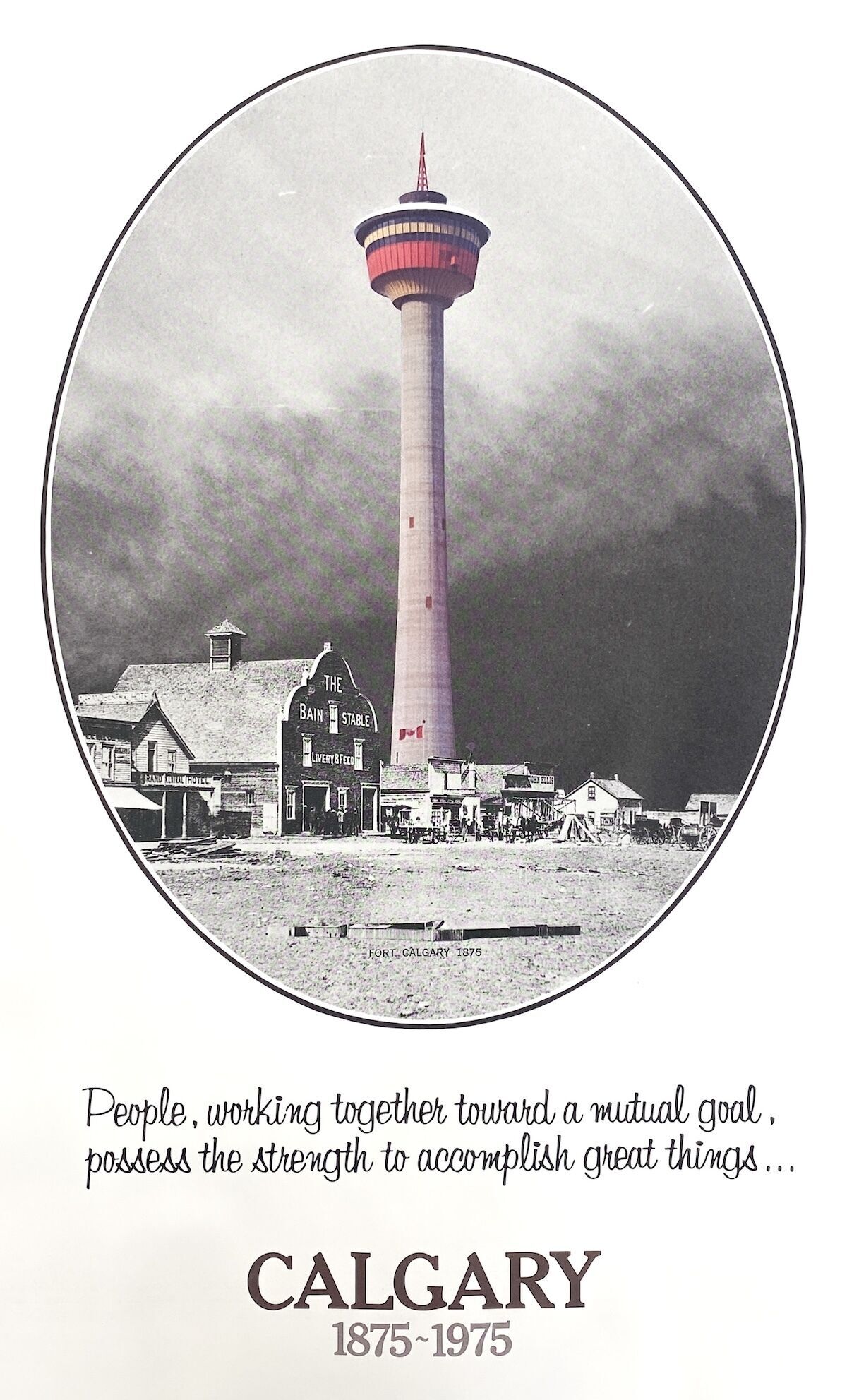
KLASZUS: I asked Confluence president Jen Thompson about this, as one of the things The Confluence is focused on is “making sense of our collective identity.”
THOMPSON: I think what we're trying to provide here is a shift in the way that we look at identity. I think there was one way that we were sort of defining what civic pride meant. It meant let's just glorify the pageantry of certain pieces of history. And that left a lot of people out of the conversation. And that left a lot of people out of feeling the pride too, because those people were impacted by enforcement and what happened here with the establishment of the fort.
I think we're at a place where people can really lean into being critical of what does civic pride mean? And be prideful in that.
What I would love to see from the residents of this city and Treaty 7 is I would love us to be known as an open, welcoming, inclusive people who aren't afraid to question who they are and be prideful around that. That is our identity.
I think we’re at a place where people can really lean into being critical of what does civic pride mean? And be prideful in that.
KLASZUS: I asked Mayor Gondek about this too, and I’ll leave you with her answer.
KLASZUS TO GONDEK: Do we have a civic identity, do you think, as Calgarians? When you think about the city, what it means to be a Calgarian? This is a debate that's happened on the national level: “Do we have a national identity?” Now the answer to that is very emphatically “yes.” But do we have a civic identity as a city?
MAYOR GONDEK: I believe we do, and I think it shines through in moments when we are tested. Last year, when the water main break happened, it was a polite question that I put to Calgarians: Could you please use less water? It wasn't mandated that in their homes they use less water. It was a polite Canadian question, could you please pitch in and use less water? Here's the ways you can do that. One less flush. Use rainwater for your plants. Only run your dishwasher when it's full.
And Calgarians and people of our neighbouring municipalities delivered. We all pull together because we know there's a greater good when we are looking after our collective best interests. So I would say we absolutely have a civic identity, and that is very community-minded people who care about the greater good.
Jeremy Klaszus is founder and editor of The Sprawl. If you value in-depth Calgary stories like this one, please pitch in to support our work!
Support independent Calgary journalism!
Sign Me Up!The Sprawl connects Calgarians with their city through in-depth, curiosity-driven journalism. But we can't do it alone. If you value our work, support The Sprawl so we can keep digging into municipal issues in Calgary!
